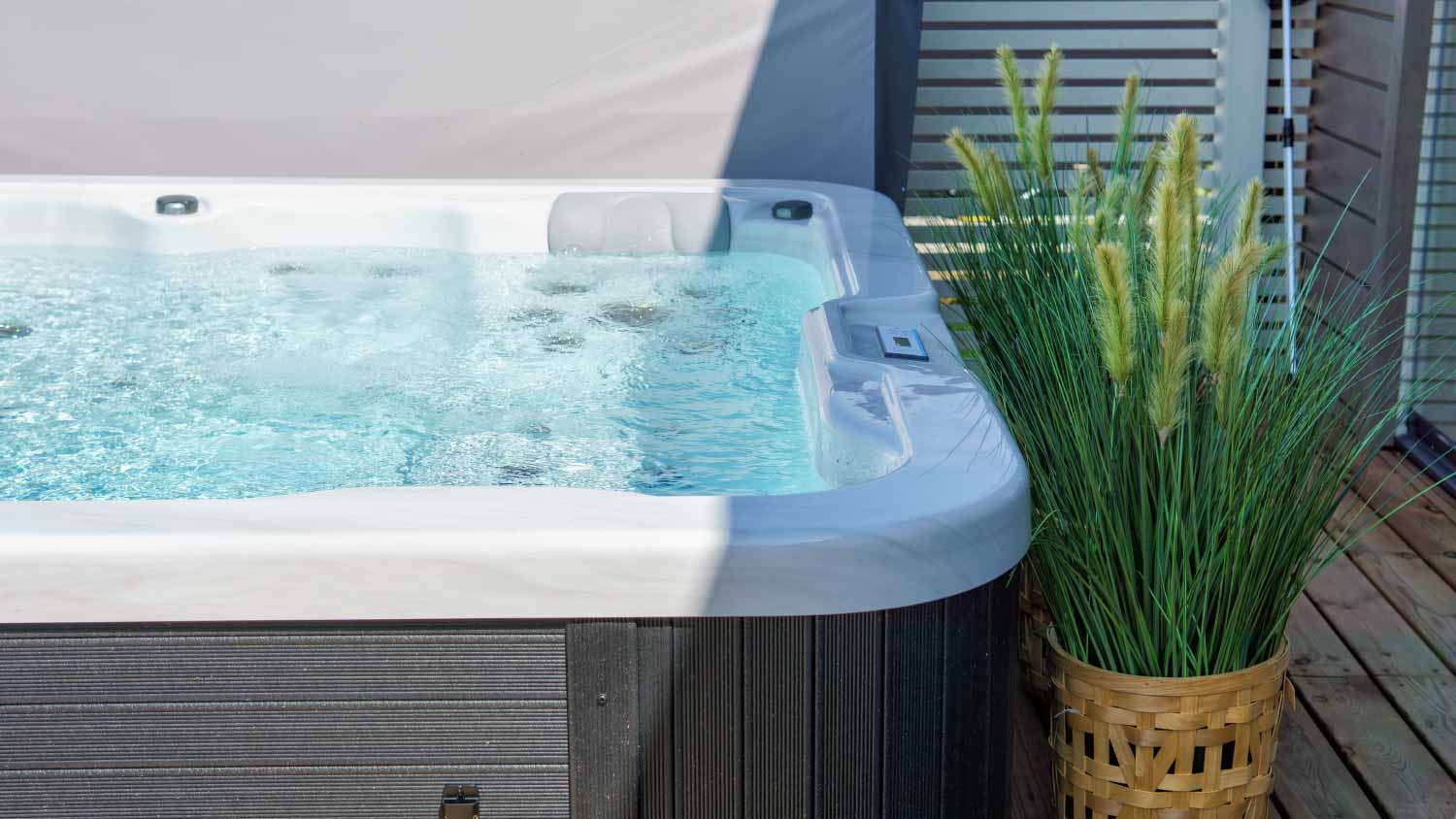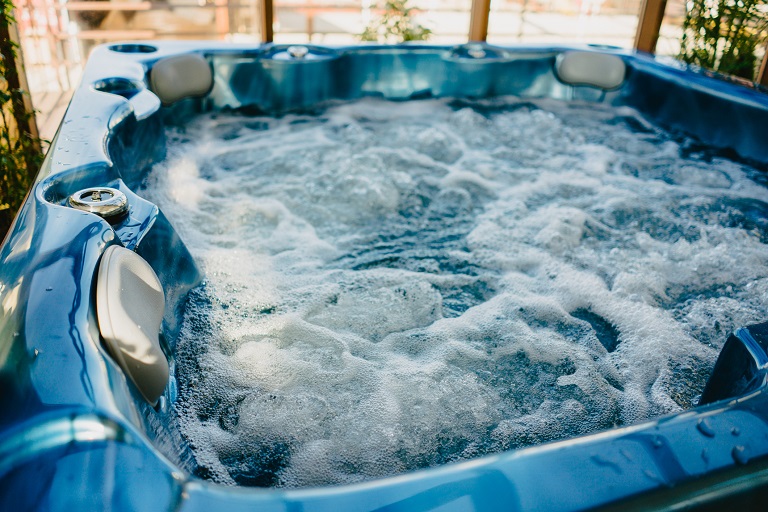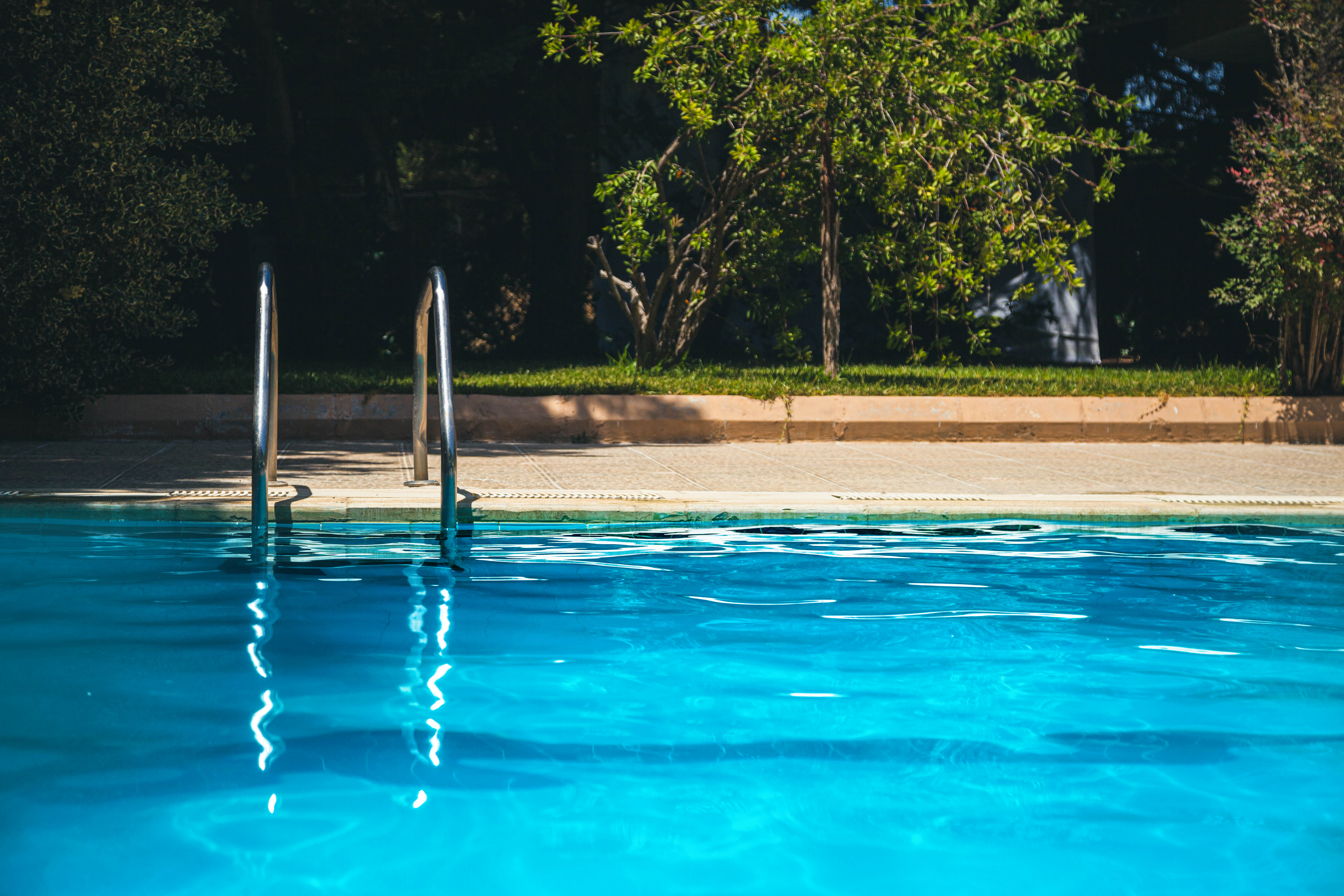
Swim spa costs vary, but each unit offers the benefits of a pool and hot tub combined. Use this guide to plan your budget.
Circulation pumps keep your spa clean and warm


Hot tub pumps circulate, filter, heat, and treat spa water.
Most hot tub pump problems result from pump malfunctions, aging, and dirty water.
It is best to call a hot tub pro for troubleshooting and repairs.
Hot tub circulation pumps last an average of five to 10 years.
Maintenance and care can help your spa pump run better and longer.
Your hot tub circulation pump works around the clock to keep spa water warm, clean, and treated. So, when your hot tub pump is not working—or if it leaks, makes noise, or circulates less water than usual—you should have the problem diagnosed and repaired right away. Here is what you need to know about hot tub pump troubleshooting, repairs, and preventative maintenance.
Hot tub pumps, also known as hot tub circulation pumps, circ pumps, and hush pumps, keep the water in spas circulating continuously or for a certain number of circulation cycles or hours per day. This is necessary to allow the hot tub to filter, heat, and evenly treat the water with chemicals. Two-speed pumps also create the jet action when you turn on a hot tub; however, some spas and Jacuzzis have separate jet-action pumps that power the jets.
Hot tub circulation pumps consist of a motor and a pump head. The motor, sometimes called the dry end, contains the electronics that power the pump. The pump head, also called the wet end, pulls water into its suction port and pushes it out through a discharge port. This pushes water through the jets at a predetermined speed.

Having trouble with your spa pump? We have got you covered. The following are common hot tub problems homeowners experience with their circulation pumps.
If you try to turn on a hot tub pump and hear only a click near the control board, you likely have a blown fuse on the circuit board. Hot tub circulation pumps may also hum but not turn on. If this happens, you may have a blockage, a clogged impeller, a failed capacitor, or a closed gate or valve. To preserve your hot tub’s warranty and stay safe, call a pro to deal with these issues.
If you can hear your hot tub pump trying to run but it is not pushing out water, you likely have an air lock or a clog. Try turning off the pump and checking your filter or alternating the jets between low and high. If that does not work, you may need to call your service professional for advice. Continuing to use a hot tub without a fully functioning circulation pump can cause larger issues, such as stagnant water, bacteria buildup, overheating, or circulation pump failure, so prioritize troubleshooting.
Flashing lights or errors showing on a hot tub pump control panel can signal any number of problems; if you have a diagnostic manual or tool, you may be able to read the code and determine the problem. If you do not, call a hot tub service professional for help.
Leaks are one of the biggest problems with spa pumps. Leaks can happen if the pump is cracked or damaged, or if internal components such as O-rings or freeze plugs fail. Often, a pro can repair these smaller issues. Catastrophic pump failure occurs when the body or shaft of the pump cracks; if this happens, you will need to buy and install a new pump.
Leaking pump seals are very common with circulation pumps, and you should expect them. As your pump ages, however, you may notice seals leaking more often, and it may take longer to repair or replace them. When your pump gets very old, it may no longer be financially smart to keep replacing pump seals, and you may choose to replace the pump instead.
When air bubbles get trapped inside spa plumbing, this can prevent the circulation pump from functioning correctly. If the pump cannot prime, water will not flow through the water lines; and the pump, heater, jets, and other parts of the spa will not work like they should. Sometimes air locks will fix themselves, but the best way to deal with the problem is to try to clear the air from the jet lines by alternating between low and high flow; if this does not work, you will need to remove the air from the pump itself.
If your circulation pump is not working at all and you are seeing an error code on your spa’s control panel, you may have a dead pump. If this happens, you will need to replace it. Before considering your pump dead, check the GFCI (ground fault circuit interrupter) switch at your outlet; if it has been tripped, resetting may be all you need to do to fix the problem. Otherwise, call a repair pro to troubleshoot.
Hot tub pumps should be quiet even when running. If yours begins to hum, gurgle, grind, click, squeal, or make more noise than usual, you have a problem. Different sounds can indicate different issues, from air locks to clogs to motor trouble. It is always best to have a maintenance or repair company diagnose and address issues.
Hot tub pump motors do get very hot, but they can overheat if they become blocked or clogged, or if they are working harder than they are supposed to. Similarly, your hot tub’s heater can reach its high limit and trip, which may make your tub pump automatically pause until the heater has cooled and is functioning again. If this happens regularly, your pump will not work like it should, and it can sustain damage. Dirty filters, clogged filters, low water, and heater malfunctions can cause these issues, so talk with your hot tub maintenance provider if you notice or suspect overheating.
Hot tub jets not working? Low water flow from hot tub pumps is usually an indicator that you need to replace your spa’s filter. It can also be a sign of a clog, air in the line, blocked flow, or a problem with the pump.
It is important to remember that pumps do not slow down and pump less over time; if your circulation pump is not pumping the usual quantity of water, it means there is a problem you should identify and fix before it burns out your pump motor or causes a bigger problem.
Hot tubs have filters that keep debris and other items out of the pump system, but these filters are not infallible. If items like jewelry, hair, bandages, broken parts of the filter, or toys, among other things, get inside hot tub pumps, they can cause clogs. These can restrict or stop water flow altogether. You may be able to dislodge a clog if you can see the item, but for clogs inside the motor or pump, you should call a pro.
If your home has hard water, then lime, calcium, and other deposits can build up inside a circulation pump motor. Over time, this can cause the pump to make noise as water pushes past deposits and moving parts become less mobile. FIltering your water, rinsing with deposit-breaking chemicals, and regularly maintaining your hot tub can prevent this.
When bearings start to go bad, they will tell you. Shrieking, squeaking, squealing, grinding, and other loud noises are indicative of bad bearings in a hot tub water circulation motor. If bearings become worn, you can choose to replace them, replace the motor, or replace the entire pump.
Evaporation, spilling, and regular use can cause a hot tub’s water level to lower. Over time, this can reduce water pressure and make it hard for your hot tub pump to function as it should. Make sure the water in your spa is an inch above the highest jet; add more water if it is low. The best cure is prevention, though, so always be sure to monitor your hot tub’s water levels and keep the spa covered when not in use.
Filters are important for many reasons, and you should always make sure yours are clean and allow water to flow through unimpeded. If you check your own filters, visually inspect them for debris and blockages. Replace them as needed. If you do not maintain your own spa, be sure to schedule regular upkeep from a pro.

Maintaining your hot tub circulation pump is part of the overall hot tub cost. Because the pump is responsible for keeping the spa or Jacuzzi clean, warm, and inviting, you will want to make sure it is working right all of the time. Low water movement or a malfunctioning circulation pump can prevent your entire hot tub from working correctly, and the water may become stagnant, cold, and dirty.
If you notice a hot tub circulation pump not working, start by doing some basic troubleshooting. Check to see whether the pump is on, if any warning lights are lit on the control panel, if it is leaking, or if you see or hear anything abnormal. If the pump is not working at all, verify that it is plugged in and that the outlet is working. Flashing control panel lights can also help you figure out what is wrong.
If there is a clog, dirty filter, or air lock that you can take care of yourself (and if you feel comfortable doing so), follow manufacturer directions. If you are at all unsure what the problem is or do not know what to do, take notes about the problem and call your hot tub service company.
Can you troubleshoot and fix your ailing hot tub pump by yourself? It is best not to try. The main reason is that you can invalidate the spa’s warranty if you attempt to open the pump housing or repair it on your own. This can be a costly mistake.
Instead, trust a certified and experienced hot tub repair professional near you. They have the tools, expertise, and know-how to do the job right, and you will benefit from preserving the warranty coverage and having a professional do the work properly. While hot tub repair costs vary depending on the problem and solution, getting the job done correctly is often worth the investment.
CIrculation pumps should last for five to 10 years, although actual time varies depending on many factors. Here is how to keep your spa pump running smoothly for as long as possible:
Follow your hot tub pump manufacturer’s operation recommendations. Some advise keeping the pump on all the time, while others suggest running it for a minimum of eight hours a day. Optimize the pump’s performance and life span by matching use to the recommendations.
Hot tub maintenance is key. The cleaner your spa and the better you care for it and your circulation pump, the longer and better the pump will function.
Clean filters regularly. You can use a garden hose, soft-bristle brush, and mild detergent to keep them clean, or have a professional regularly maintain your hot tub.
Tie up long hair. Hair is one of the biggest causes of clogs in hot tubs.
Shower before getting in your hot tub. Sweat, dead skin cells, hair products, lotions, deodorant, and other personal care products will accumulate in the filter and make the pump work harder. By rinsing off these items beforehand, you will keep the water cleaner and reduce the workload on your circulation pump.
Keep the hot tub covered when not in use. This keeps heat in and prevents evaporation, both of which will lessen the work the pump has to do.
Use the right chemicals and maintain correct chemical levels.Too little chlorine or bromine can allow water to get stagnant or dirty, and too much can be hard on the pump and other surfaces the water touches. Use chemical testing strips and regularly monitor your spa’s chemical levels.
Change the hot tub water and scrub your tub on a schedule—usually every three to six months, depending on use. Dirty water is harder on your circulation pump and other working parts.
From average costs to expert advice, get all the answers you need to get your job done.

Swim spa costs vary, but each unit offers the benefits of a pool and hot tub combined. Use this guide to plan your budget.

Wondering how much it costs to run a hot tub? Discover average monthly and yearly costs, key factors, and tips to keep your hot tub expenses in check.

Discover the average hot tub maintenance cost, what impacts pricing, and how to save money. Get expert tips to keep your hot tub running smoothly all year.

Discover how much a pool vacuum costs, including average prices, installation, and maintenance factors to help you budget for a cleaner pool.

Discover the cost of whirlpool tub installation, including average prices, key cost factors, and tips to help homeowners budget for their project.

Why is my pool pump so loud? Clogs, faulty parts, low water levels, and more can cause a noisy pump. Discover why and what you can do to fix it.